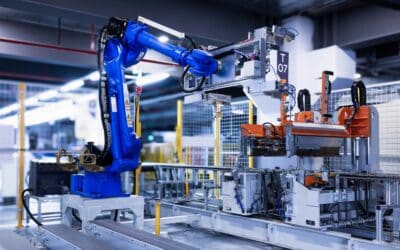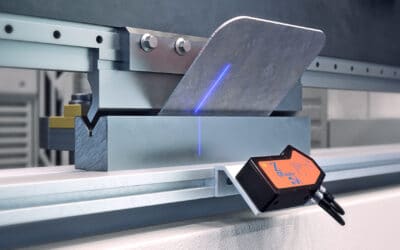The advantage that makes the difference
Machine vision is being used more and more frequently in large companies and is already firmly established in many work processes. The takeover of tasks by machine vision systems such as quality inspections, bin picking and much more increases efficiency enormously. Small and medium-sized companies can also acquire this advantage in order to remain competitive and grow.
What is machine vision?
Machine vision is a combination of hardware and software that helps machines with processes. Put simply, the hardware gives the machine its eyes and the software its brain. Thus, monotonous tasks are taken over by robots that perform them precisely. This has several advantages.
Advantages of machine vision
Efficient, accurate and resource-saving
On the one hand, a robot manages a larger number of pieces than a human, since it does not need breaks. In addition, it can maintain quality at all times. Fast production makes it difficult for employees to notice errors and eliminate them. This is not a problem for vision systems. Time and resources are saved. Efficiency increases enormously and the error rate is reduced.
Individually customisable
At first glance it seems that industrial machine vision only supports a few processes, but this is not the case. The software is designed to be used in a wide variety of places. As a loaner, you often don’t see how much potential there is for automation in your own production. So it’s worth talking to an expert.
Potential for good work
In smaller companies, employees frequently have to work more diversely and do more work than in larger companies. Machine vision can relieve the burden on employees in many ways. On the one hand, monotonous and physically demanding tasks are eliminated through the use of machine vision. On the other hand, employees’ tasks are reduced, leaving more time for further training and more demanding activities.
Which processes can industrial machine vision take over?
Quality assurance
There are many possible applications for industrial image processing. One large area is the quality assurance of individual parts. Here, the parts are practically scanned for defects by the machine vision solution. Geometric shapes such as wheels can be inspected for abnormalities. Glossy surfaces and complex shapes are particularly challenging.
Bin picking
Bin picking is another important component in production. In this process, single parts are taken out of a box by a robot and placed on an assembly line, for example. These parts are often interlocked or overlap each other. In particularly critical cases, there is the option of placing a vibrating plate under the crate, which separates the parts from each other.
Further application possibilities
- Assembly of machines
- Machining
- Inspecting the inside of materials
- Detecting packaged objects
- Filling inspection of liquids in vessels
- Detect contaminated surfaces
- Sort debris
- 3D person measurement, recognizing gestures, posture & facial expressions
- and much more
Features of machine vision
The hardware of the machine vision system is robust. This allows the vision system to be mounted in areas exposed to higher and lower temperatures. Dust, chips and other dirt in the production areas is also not a problem as long as the camera lenses are not blocked from view. In special circumstances, such as working with liquids, care must be taken to select the appropriate vision system.
What are the advantages of machine vision for SMEs?
Issues faced by SMEs
SMEs often face the issue that production is either too slow or errors creep in during fast manufacturing processes. The result is poor quality and customer dissatisfaction, which can have a major impact on the success of the business. Larger companies also increasingly rely on lean production, which makes it even more difficult for smaller companies to keep up in terms of price and quality.
Machine vision is the solution to this issue
If robots taking over monotonous tasks, the output increases, while at the same time the quality is ensured. In addition, the personnel costs decrease in comparison to the turnover. The possibilities that machine vision already offers are very versatile, so that one can automate a variety of processes.
Low time expenditure
In addition, the user interface is regularly designed to be simple and quick to use. Setting up an industrial machine vision solution and learning how to use it therefore takes little time.
Is it financially worthwhile for my company?
Machine vision is an investment that seems expensive at first glance, especially for smaller companies. But if you introduce the machine vision program in a position with concretely outlined tasks with a clear requirement profile, it will pay for itself in most cases after less than 2 years.
Your first step towards industrial machine vision
Are you still not sure whether industrial machine vision is really for you? Feel free to contact our specialists and let them advise you.



